| |
Fifty years ago, when I was a boy, I was given a book published by the National Parks Association called Exploring our National Parks and Monuments (3d ed.) by Devereux Butcher. It was published in 1951, and featured black-and-white photos of all of them. At that time there were 28 National Parks and 64 National Monuments. My father enjoyed National Parks, and we visited quite a number when I was young. When I became 18 and had my own car (a red VW bug), my first trip was to head to Arizona & New Mexico to see as many of the still missing National Parks & Monuments as I could. Together these 92 sites represented my childhood dreams for future travel in the United States — until I began a hardcore birder and priorities changed. Still, my aim is to visit as many our our National Parks & Monuments as I can . . . and I've begun to focus as well on historic sites maintained by the National Park Service. We now enter an eBird list in each one visited, so we have it all: birds, nature, natural wonders, and American history.
Today, in 2020, I've had the good fortune to visit 51 of the current 61 National Parks (84%), and have read extensively about those I haven't yet visited. Since 2015 I've been sharing my favorites via photos and text, and every so often I'll update these pages. These are the Parks that inspired, for me, the most awe and wonder. I've visited many of them several times. Two of them (Sequoia & Kings Canyon) are adjacent and are administered together. They feel simply like one great park, and I combine them as a single choice below.
During my life, the number of National Parks has expanded from 28 to 61: a 118% increase. Most of our current 61 National Parks were created when Congress elevated large and spectacular National Monuments to National Park status. In addition, seven new ones were created in Alaska in 1980 — I will probably not visit the more remote ones there. Most of the current 61 meet the conceptual standards for National Park but a few do not (e.g., Hot Springs & Gateway Arch do not —see footnote at bottom of this page). |
|
| |
|
|
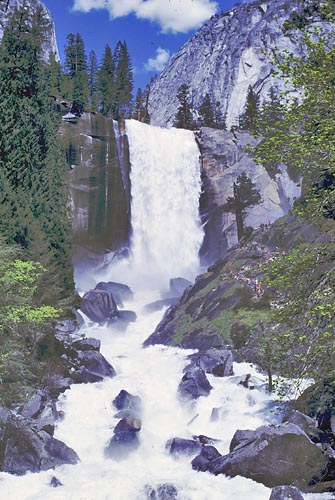 |
Yosemite feels like home to me. I've been going there since I was a child. While camping in spectacular Yosemite Valley, I learned the names given to all cliffs and domes. I've floated down the Merced River, hiked to waterfalls, chased birds in the red fir forests, and admired unparalleled scenery. Yosemite has all the seasons: snow-dusted mountains around the Valley in winter (above), reflections on Mirror Lake in spring (right), abundant water during some summers (left: Vernal Falls), and gorgeous high county above treeline in fall (below: Greenstone Lake). There is no other place that compares. |
|
|
|
|
| |
| |
| 2 |
Yellowstone NP Wyoming / Montana |
|
|
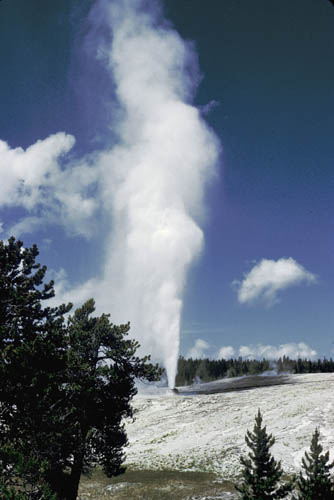 |
Yellowstone is huge and there is so much to see and do! Photographers spend weeks stalking wildlife — bears, wolves, moose, elk. In my early visits, I was addicted to geysers. Yellowstone has over 500, with at least 22 "major" geysers. During my early trips, I spent days hiking to and waiting for geysers to erupt.
Famed Old Faithful goes off regularly for all but Beehive Geyser (left) is irregular (intervals 11-19 hours). If you have time to wait — wow . . 150' high blast ! The interval for Castle Geyser (right) is about 13 hours and its dome adds to the event. Jewel Geyser(above), in the Biscuit Basin, varies with its water level, but the short but broad spray is lovely against angry clouds. There are huge geysers (Steamboat) that don't erupt for years. There is so much more, including the tableau formed by Yellowstone Falls and its setting (below). And did I mention the wildlife? . . . |
|
|
|
|
| |
| |
|
|
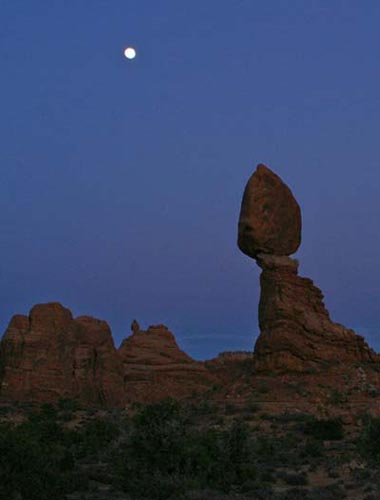 |
Arches NP is a kaleidoscope of bizarre and fascinating rock formations, whether seen by day (right: Turret Arch through the Windows) or night (left: Balanced Rock). The ultimate is Delicate Arch (above), framing a snow-capped sierra. Landscape Arch (below) appears to defy gravity. It will collapse some day . . . see it now. This is the best rock collection anywhere! |
|
|
|
|
| |
| |
| 4 |
Denali NP & Preserve Alaska |
|
|
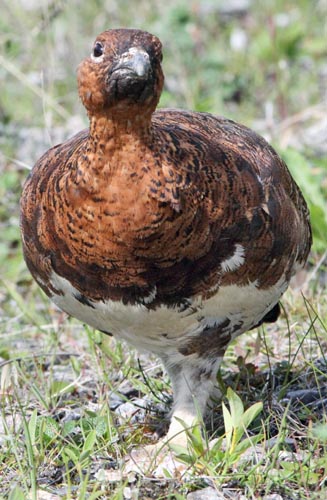 |
Denali — the former Mr. McKinley — is so big that it creates its own weather. It is so often covered with clouds that locals will tell you that your chance of seeing North America's highest mountain on any given day is just 33%. We hit the averages on our visit — we did not see Denali (above) until our third morning there.
Yet one visits Denali NP & Preserve to become lost in the huge wilderness and encounter wildlife, from a curious male Willow Ptarmigan (left) to Moose (mother & calf, below), and hope you are lucky enough to encounter a Wolf (right). We managed the Denali "big 5" -- Moose, Caribou, Dall's Sheep, Brown Bear, and this lone Wolf — on a single bus ride that transected the park [autos are not allowed in most of the Park].
|
|
|
|
| |
| |
| 5 |
Grand Canyon NP Arizona |
|
|
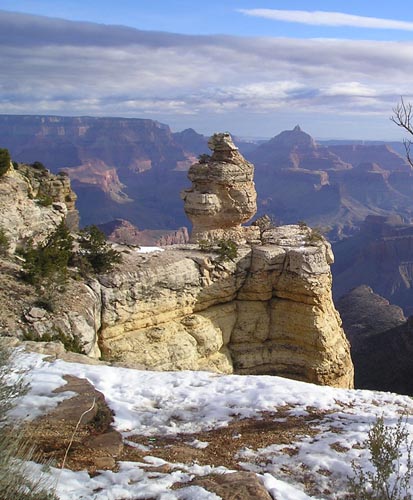 |
When one walks up to the edge of the Grand Canyon for the first time, it will leave you speechless. It is just too big, too deep — it seems to go on forever. It is not just the size and scope but the colors, the shadows, the clouds and the snow (in season; left). There are numerous viewpoints — these, from the South Rim are Hopi Pt. (above), Wachita Pt. (left), and Moran Pt. (below).
The South Rim has the most tourists but there are other places to go. Hike down to the bottom, drive around to the North Rim, or visit nearby Havasupi Reservation where the unique blue-green waters pour over red cliffs to form Havasu Falls (right). It was a memorable hike with my father to the falls when I was quite young.
|
|
|
|
| |
| |
| 6 |
Sequoia NP and Kings Canyon NP California |
|
|
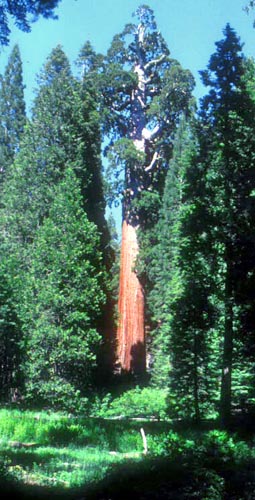 |
Two parks for one visit! Adjacent and jointly administered, Sequoia and Kings Canyon National Parks encompass vast stretches of the high Sierra Nevada and spectacular groves of giant Sequoia redwoods (above). The General Grant tree (left, in Kings Canyon NP) was thought to be the largest tree in the world prior to 1931, when the first precise measurements indicated that the General Sherman tree (in Sequoia NP) was slightly larger. The latter is thought to be 1650 years old.
Scenery on the western slope of the Sierra is impressive. The Kaweah River (right) thunders through Sequoia NP, contrasting with placid Crescent Meadow (below).
|
|
|
|
| |
| |
|
|
|
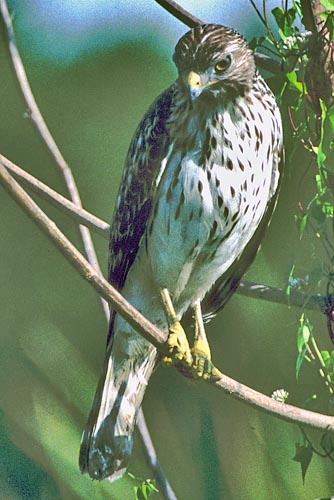 |
Everglades NP is for wildlife. It is a unique habitat for the U.S., a "river of grass" cut by larger mangrove-lined channels (above right, with canoers). I'm interested in what's below the water (lower right: American Crocodiles) and the plethora of birds (above: rookery
at Eco Pond;
(left) young Red-shouldered Hawk, (below) Roseate Spoonbill).
|
|
|
|
| |
| |
|
| |
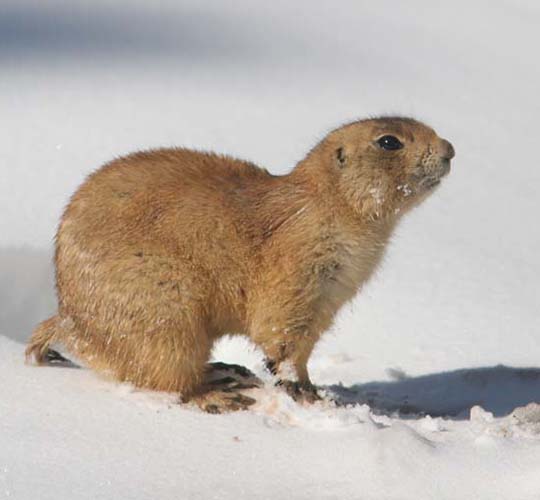 |
Bryce was a favorite among Parks in sw. Utah. Perhaps its red palette was best with a frosting of snow? A winter treat — Bryce Pt. (above) or at Sunset Pt. ('hoodoos,' right, overview below). In March, Utah Prairie-Dog emerges from hibernation (left). |
|
|
|
| |
| |
|
|
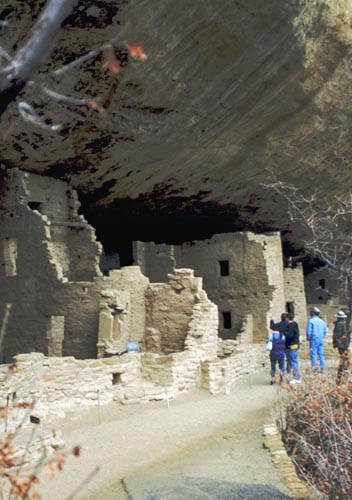 |
Talk about your antiquities -- they are here at Mesa Verde NP. It was established in 1906 to protect the finest collection of prehistoric Native American cliff dwellings in the U.S. Largest among them is Cliff Palace (below), with 8 floor levels and 200+ rooms. Its setting (above, top center in photo) is spectacular. Tower Ruin (right) is also impressive. Tourists are permitted to visit some sites — such as Spruce Tree Ruin (left) — to view living quarters up close.
Mesa Verde plateau rises 2000' above surrounding country, and is slashed with canyons and caves. The Ancestral Puebloans lived here between 600 to 1300. They kept no written records. In the late 1190s they began to build the cliff dwellings for which Mesa Verde is famous. It is the only cultural National Park set aside by the National Park system.
|
|
|
|
| |
| |
| 10 |
Hawaii Volcanoes NP Hawaii |
|
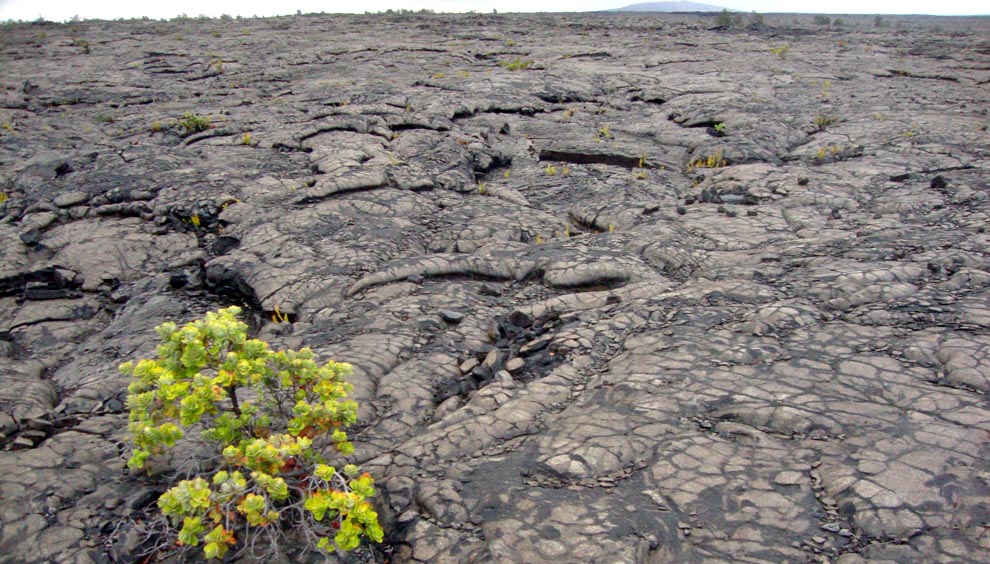
|
| |
|
Hawaii Volcanoes NP on the "Big Island" of Hawaii encompasses two active volcanoes: Kilauea, one of the globe's most active volcanoes, and Mauna Loa, the world's most massive above-ground volcano. The Park includes lava flows of various age that stretch to the sea (above). There are lava tubes to visit (left) and tropical forests with native birds, such as 'Apapane (right). As an active volcano, Kilauea (below) is constantly changing. Visit at night to see it glow! |
|
|
|
| |
|
| |
National Parks get all the publicity — Ken Burns wonderful PBS film features them — but I've also been drawn to National Monuments all my life. They are over-looked gems. Thus I've expanded my on-line project into 3 parts:
- My top 10 National Park (this page)
- My top 10 National Parks that languished as National Monuments (or other units) for 10 or more years (next page)
- My top 10 National Monuments that feature natural or archaeological wonders [with bonus choices on Monuments that preserve U.S. historical sites]
In addition to these projects, many Civil War battlefields are operated by the National Park Service as National Military Parks, National Battlefields, or similar designations. Many of these are highlighted on-line as:
- My 50 best Civil War sites — ranked on my experience as an interested visitor
Footnote: By 1950, Exploring our National Parks and Monuments listed two National Parks that the author and publisher felt did not meet National Park standards. The National Parks Association's definition required that National Parks be "Spacious land and water areas essentially in their primeval condition and, in quality and beauty, so outstandingly superior to average examples of their several types as to make imperative their preservation intact and in their entirety for the enjoyment, education and inspiration of all the people for all time." The author wrote:
"Although designated 'National Parks' . . . neither Hot Springs NP, Arkansas, nor Platt NP, Oklahoma, meet [National Parks Association] standards." Therefore they were not presented in Butcher's book. Hot Spring was "47 natural hot springs reserved by Congress in 1832" and "one and a half square miles of wooded hills added in 1921." Even as a child, I recognized that this was of different quality than my favorite National Parks.
Hot Springs remains a National Park today -- at just 8.5 sq. miles, the next-to-smallest of the current 62 National Parks. The former Platt NP, which embraced one and a third sq. miles of "mineral springs in gently rolling wooded country traversed by numerous springs" was abolished by Congress and made part of the much larger Chickasaw National Recreation Area in 1976. Unfortunately, the man-made Gateway Arch in St. Louis became a "National Park" in 2018 despite its tiny size (91 acres, which is less than 0.15 sq. mi.) and the lack of any natural features. It is very clear that neither Hot Springs nor Gateway Arch meet National Parks standards — and should become "National Historical Parks" instead (currently there are 57 other National Historical Parks). It is only for partisan political reasons that these two are called "National Parks" — the only thing Republicans and Democrats can agree upon in those states is that AK and MO "deserve" a National Park. With this sort of insular thinking, I fear future "National Parks" will be created out of nothing in all the States that don't have a National Park, and the whole concept of a "National Park" will be degraded beyond repair.
All photos & text © Don Roberson
|
|
| |
|
| |
|
|